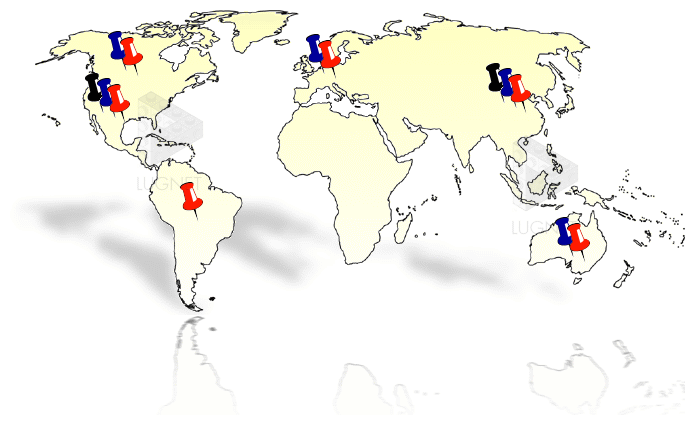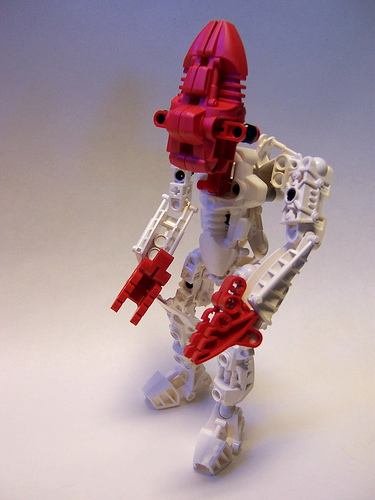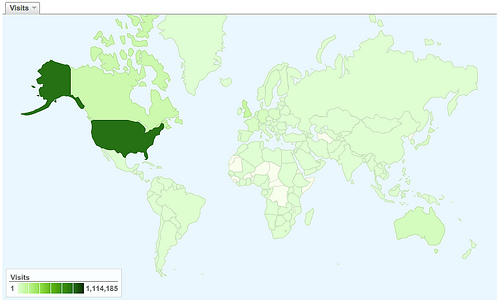LEGO is expensive; we all know it. For us builders, we always need more bricks to complete that big project sitting on our desk or in the back of our minds. More bricks cost more money, and that’s where the problem comes in. Luckily, we builders have an extremely valuable asset that only a few have begun to exploit. For the first time in the building community, I will show you the benefits of opening your own Bricklink store, turning that once cash-consumptive marketplace on its head to bring you a dependable supply of money and free bricks.
So what’s the trick? Sell minifigs. What if I told you that since December of just a month ago I’ve a grossed a revenue of $1,500? Would that be enough for you to buy every set on your holiday wish list and finally get the parts to complete those half-finished creations growing cobwebs on your desk? I would think so. I have operated a Bricklink store for a bit over a year now, and I have acquired the experience to confidently say to you that “yes, you could maintain your LEGO hobby at zero cost.”
Let’s get started. First and foremost, you are a builder who is interested in the noble effort of funding for your expensive hobby. If you’re not the aforementioned type, things could go very differently for you at suboptimal outcomes. Now that we’ve established our common grounds, you will need to let go of your sentiments for minifigures. See them as the livestock you must consume to fight off starvation. You can choose to remain a peaceful vegetarian, or you can start eating meat.
Why minifigs? Because they sell high and are easy and cheap to ship. Plus, you don’t need them to build a castle wall or the hull of a spaceship. Here are two enticing examples from my recent sales. 1). I purchased about 40 new 2009 Star Wars Battle Packs at $10 each, sold nearly all of the minifigures, made a $200 profit and kept all the bricks and accessories for free. 2). I also bought Count Dooku’s Solar Sailer for $50 (after coupons), had fun writing a review, and then sold the Count for $37 and put up the Magna Droids for sale at $10 each. In the end, you can see that I’m easily making a profit while keeping all the parts from sets for free.
At first, it’s hard to believe why minifigs fetch such high values, but if you think about it, it makes sense. In addition to the builders, there are also collectors – people who want to own their favorite minifigs but don’t want the building blocks. Thus, why should they buy whole sets when they can get the figs individually? Plus, LEGO costs a whole lot more outside the States as most of us know; thus buying minifigs makes perfect sense to collectors.
To start your Bricklink store, dig up your pre-existing minifigs and find their market values on Bricklink through the price guide for each fig. It is highly worthwhile to sell Star Wars figs and almost useless to sell your non-franchised Exo-Force or Power Miner dudes (Indiana Jones falls in between).
Next, and this is important, list your minifigs at the lowest prices! There is no shortage of competition on Bricklink from large scale sellers. If you don’t beat their prices, why should anyone buy from a small store like yours or mine? But do not despair, even at the lowest prices, your Darth Vader will still make you over ten bucks richer and Yoda can buy you a medium sized set. So how low should you go? Here’s what I learned from over the months: note the lowest sale price in the US (provided you live in the States), then note the quantity available and the store’s feedback count. If both are low, then you can price your minifig at near that price, but if both are high, you should start by pricing your fig at 50 cents cheaper. At the same time, you need to take concern the popularity of the minifig. Check the number of times the fig was sold recently; the lower the quantity sold, the cheaper you must go to tempt buyers to buy your unpopular figure.
Shipping – it’s not as hard as you think and definitely cheaper than you’d imagine. Minifigs ship in tiny bubble mailers, which cost you a little over $1 to ship in the US and around $2 to ship internationally. You can buy the smallest bubble envelopes from Walmart at $4.44 per 10-pack. However, I recommend buying 100 from Amazon for $16. When it comes to charging your customer, you will not receive complaints if you start your shipping rates at $2 for domestic and $3 for international orders. Find that balance and you’ll end up actually making a profit on shipping that will compensate for your 3% Paypal and 3% Bricklink fees.
Fortunately, time is not an issue. As a minifig seller, it takes no time to package an order of just a few figs in contrast to an order of hundreds of parts. And since you’re already sorting your pieces as a builder, taking out the minifigs from sets should be no problem. However, the largest time consuming factor is shipping; you must be willing to make trips to the post office unless you are adept with shipping from home.
Last and most importantly: be aggressive in buying sets to supply your inventory. Once you target a set with minifigs that sell well; don’t hesitate to get it. The worst that can happen is you end up selling the minifigs but still fall $20 short to fully pay off your 1000-piece set (for example the Republic Gunship around the time of its release). But “oh my god,” $20 for 1000 pieces, what a bummer!
There is one major caution to be on the lookout for. Minifig prices dip fast and then rise fast once the set is out of production. Thus, you should strive to be among the first to sell a minifig from a new set (that’s when no one in the world has it and everyone wants it). Once people have gotten their hands on new sets, prices for new minifigs drop significantly by up to 50%. If you have not sold your figs yet, you may consider holding onto them until the set goes out of production in a year or two (and that’s risking re-releases of the same minifig). Unless you’re very patient, your biggest bet is to sell fast, or you’ll send up selling low.
These should be the basics. It is now up to you to spend a few hours to open your store and get acquainted to the procedures of selling. At first, things may start low (especially when you have a feedback count of less than 30 and not much in your inventory), but be patient and invest when the next wave of Star Wars and Indy sets come out (yea Taun-Tauns!). Wait for it like your birthday, and then go all out on the party.
Here’s a list of do’s and don’t’s to wrap things up.
Do
• Sell low – or you’ll be driven into oblivion by large scale competitors.
• Sell minifigs – especially Star Wars and franchised ones.
• Sell fast – you have a small time frame when new minifigs are released until their prices drop.
• Sell internationally – approximately half of your buyers will come from outside the US.
• Sell new – new minifigs are more likely to be sold and fetch higher values. Displayed minifigs can pass as new, but played-with minifigs should be marked used.
• Become best friends with the price guide – although it’s not possible to actually do so, nevertheless you’ll be relying on the price guide for every minifig you plan on selling.
• Frequently adjust prices – market prices are dynamic, and you should keep up.
• Be kind to your customers – and grant their requests for small discounts if they ever contact you before ordering. A small bit of pocket change is worth an order and a satisfied customer.
• Buy now, think later – I have abided by this simple axiom on purchasing sets and it has paid off. I suggest you do the same because LEGO does not depreciate in value.
Don’t
• Don’t sell parts – there are plenty of large Bricklink stores that do that, and besides, you’re a builder, you need the parts.
• Don’t sell sets – they’re a hassle to ship and are also costly and space consuming. Shipping a large set outside the US will cost you nearly $50. Selling minifigs give you cheap or free leftover parts. Selling sets don’t.
• Don’t offer free shipping – buyer’s aren’t much more tempted to buy from you if you offer free shipping. I have done this for several months without increases in sales.
• Don’t sell if you’re underage – Bricklink requires you to be at least 18 years old to be a seller.
• Don’t worry – it takes time to build the experience from selling and gain the confidence to invest. I am just experiencing both after a whole year. Nevertheless, any income at all is better than no income.
With these tips and advices, you’re off to start a new adventure, one that will someday break even the income and expenditures on your LEGO hobby. I have almost reached that point, having sold $290 in the past week and $350 the week before. It is then that you truly appreciate your capability to buy bulk parts without damaging your wallet, to build large scale creations as a student or without upsetting your wife, and perhaps to have some leftover cash to go partying with friends.
See it like this: when you spend Paypal cash like Monopoly money and see Bricklink as just a board game, you have found your way to a self-sustaining hobby limited only by the breadth of your imagination.
Questions? You can contact me via Bricklink.
The Brothers Brick is funded by our readers and the community. Articles may include affiliate links, and when you purchase products from those links, TBB may earn a commission that helps support the site.
 For those of you who read Lugging pt. 1 or have been interested in finding a LEGO user group (LUG) for some time, this is my effort to help you find a LUG. At a recent event at LEGOLAND California where my LUG (SandLUG) hosted a display, a lot of visitors from the rest of the country and world had questions about how to find LUGs in their home towns. I was pleasantly surprised by all the interest, though I wish I’d been able to provide lugging first aid.
For those of you who read Lugging pt. 1 or have been interested in finding a LEGO user group (LUG) for some time, this is my effort to help you find a LUG. At a recent event at LEGOLAND California where my LUG (SandLUG) hosted a display, a lot of visitors from the rest of the country and world had questions about how to find LUGs in their home towns. I was pleasantly surprised by all the interest, though I wish I’d been able to provide lugging first aid.  One of the challenges of finding LUGs is that they are based on multiple platforms. Some are basically just an e-mail list that the members have stashed away somewhere, some are discussion threads or groups within LEGO communities like LUGnet, some operate within larger online networking sites like Google, flickr, MySpace or facebook, and still others host their own sophisticated websites. Some groups have members and groups on multiple platforms, but use a single platform for group-wide discussions or announcements.
One of the challenges of finding LUGs is that they are based on multiple platforms. Some are basically just an e-mail list that the members have stashed away somewhere, some are discussion threads or groups within LEGO communities like LUGnet, some operate within larger online networking sites like Google, flickr, MySpace or facebook, and still others host their own sophisticated websites. Some groups have members and groups on multiple platforms, but use a single platform for group-wide discussions or announcements.  A good place to start is the right-hand column on this very site, which has scores of communities and resources listed, including several LUGs. Look through them. See if anything looks familiar. If nothing pops out at you there, go to LUGnet, Eurobricks, MOCpages, Brickshelf or any of the other LEGO-specific “umbrella” sites and browse for a forum, topic, discussion or group that relates to you. LUGnet also has a map (though slightly out of date) that has pins showing the locations of different kinds of LEGO clubs throughout the world, with links to those clubs/LUGs.
A good place to start is the right-hand column on this very site, which has scores of communities and resources listed, including several LUGs. Look through them. See if anything looks familiar. If nothing pops out at you there, go to LUGnet, Eurobricks, MOCpages, Brickshelf or any of the other LEGO-specific “umbrella” sites and browse for a forum, topic, discussion or group that relates to you. LUGnet also has a map (though slightly out of date) that has pins showing the locations of different kinds of LEGO clubs throughout the world, with links to those clubs/LUGs.  Probably the easiest (you’ll inevitably get some junk) is typing “lug lego” or “lego user group” into any old search engine. If you want to get super-fancy, type in a city, region, state, province, country or interest as well (though not all), which may narrow your results. Avoid just typing “lug,” it’s too common a word and apparently entering “lug” and a German city name could also result in some fairly interesting, but non-LEGO related hits.
Probably the easiest (you’ll inevitably get some junk) is typing “lug lego” or “lego user group” into any old search engine. If you want to get super-fancy, type in a city, region, state, province, country or interest as well (though not all), which may narrow your results. Avoid just typing “lug,” it’s too common a word and apparently entering “lug” and a German city name could also result in some fairly interesting, but non-LEGO related hits.  TBB has a fairly large readership, so questions about LUGs are more than welcome and there’s a good chance one of our other readers or contributors will have an answer. I also have a discussion thread in the flickr LEGO group that’s dealing with lugging issues.
TBB has a fairly large readership, so questions about LUGs are more than welcome and there’s a good chance one of our other readers or contributors will have an answer. I also have a discussion thread in the flickr LEGO group that’s dealing with lugging issues. 





 Add the photo to the LEGO pool (Flickr):
Add the photo to the LEGO pool (Flickr):







 Knowing that there are tens of thousands of you out there reading what we post makes our efforts here on The Brothers Brick truly worth it. Running this site isn’t free, though. We use the revenue from our advertising to pay the bills, and then we give every extra penny back to you — through contest prizes, giveaways, and so on. If you don’t believe us, just ask BrickCon attendees! ;-)
Knowing that there are tens of thousands of you out there reading what we post makes our efforts here on The Brothers Brick truly worth it. Running this site isn’t free, though. We use the revenue from our advertising to pay the bills, and then we give every extra penny back to you — through contest prizes, giveaways, and so on. If you don’t believe us, just ask BrickCon attendees! ;-)